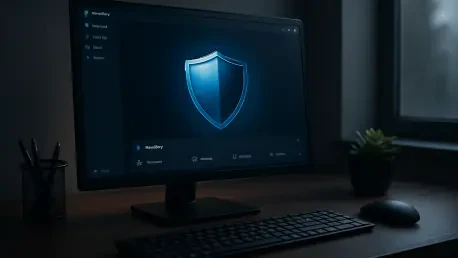At Arizona State University (ASU), a technological marvel named Sol stands as a beacon of academic innovation, holding the prestigious rank of No. 388 among the top 500 supercomputers worldwide, and its high-performance computing (HPC) system is equipped with 18,000 CPU cores and 224 GPUs. Operating at speeds roughly 2,000 times faster than a modern laptop while offering 4,000 times the data storage capacity, Sol fuels groundbreaking research in diverse fields such as artificial intelligence and protein folding, empowering scholars to tackle some of the most complex scientific challenges of our era. Its immense computational power serves as a vital asset for the university, driving simulations and data analysis that push the boundaries of discovery. However, with such extraordinary capabilities comes an equally significant responsibility to protect this resource from cyber threats. Ensuring Sol remains secure is not merely a technical task but a critical mission to safeguard the integrity of ASU’s research community and the sensitive data it handles.
Unleashing Sol’s Computational Might
Sol’s role at ASU cannot be overstated, as it provides researchers with the ability to conduct intricate modeling and simulations that are essential for scientific advancement. Douglas Jennewein, executive director of ASU’s Research Technology Office, has highlighted how this supercomputer underpins innovation across multiple disciplines. From decoding complex biological structures to simulating environmental changes, Sol enables projects that address pressing global issues with unparalleled precision. Its capacity to handle vast datasets transforms raw information into actionable insights, making it a cornerstone of academic progress. The sheer scale of its processing power allows for experiments that would otherwise take years to complete, shrinking timelines and accelerating discovery. Yet, this very strength also draws attention from potential adversaries seeking to exploit such a powerful tool, necessitating robust strategies to preserve its sanctity for legitimate research purposes.
The significance of Sol extends beyond its technical specifications, embedding itself into the fabric of ASU’s mission to push intellectual boundaries. Researchers rely on this system to explore uncharted territories in science and technology, often collaborating across departments and institutions to maximize impact. The ability to run high-level computations fosters an environment where innovative ideas can flourish, positioning ASU as a leader in cutting-edge research. However, the more integral Sol becomes to these endeavors, the greater the stakes in protecting it from digital intrusions. Every project run on this supercomputer carries sensitive data or proprietary methodologies that, if compromised, could undermine years of effort. Thus, maintaining Sol’s operational integrity is paramount, requiring a proactive approach to cybersecurity that evolves alongside the ever-changing landscape of digital threats.
Confronting Digital Dangers
The cybersecurity risks facing Sol are multifaceted and demand constant vigilance, as emphasized by Souradip Nath, a graduate research associate at the Center for Cybersecurity and Trusted Foundations (CTF). Threats such as unauthorized access and data leaks pose severe risks to the system’s integrity, potentially exposing critical research to malicious entities. Beyond mere access, there is also the danger of computational resources being diverted for illicit purposes, such as cryptocurrency mining, which could drain Sol’s capacity and disrupt legitimate work. These vulnerabilities are not abstract; they represent real challenges that could derail ASU’s research initiatives if not addressed with urgency. The sophistication of modern cyber-attacks means that even a single breach could have cascading effects, compromising not just data but also the trust placed in academic institutions.
Further compounding these concerns is the nature of the information stored within Sol, as noted by Ananta Soneji, a Ph.D. student in computer science. The supercomputer houses highly sensitive data, including medical records and environmental statistics, which are invaluable to researchers but also attractive targets for cybercriminals. A breach involving such information could lead to ethical dilemmas and legal repercussions, not to mention the loss of public confidence in ASU’s ability to safeguard critical assets. The potential misuse of Sol’s power for non-research activities adds another layer of complexity, as it could overburden the system and hinder its primary functions. Addressing these risks requires more than just technical solutions; it demands a cultural shift within the research community to prioritize security at every level of interaction with the supercomputer, ensuring that every user understands the gravity of the threats at hand.
Fortifying Defenses Against Intrusions
To mitigate the array of cyber threats, ASU has implemented a comprehensive suite of security measures for Sol, as detailed by Gail-Joon Ahn, a professor and founding director of CTF. Robust protocols such as two-factor authentication (2FA) and mandatory virtual private network (VPN) access using ASU credentials form the first line of defense, ensuring that only verified users can interact with the system. These measures are complemented by adherence to strict cybersecurity standards designed to minimize vulnerabilities. Principles like least privilege, which restrict user access to only what is necessary for their tasks, play a crucial role in limiting potential damage from compromised accounts. Additionally, separation of duty distributes responsibilities across multiple individuals, reducing the risk of internal misuse and enhancing overall system security.
Beyond these foundational safeguards, ASU continually refines its approach to protect Sol from evolving threats. Regular updates to security protocols ensure that defenses remain relevant against new attack vectors that emerge in the digital realm. The integration of multi-factor authentication tools adds an extra barrier, making unauthorized entry significantly more difficult even if credentials are stolen. These efforts are not just about preventing access but also about creating a secure operational environment where researchers can focus on their work without fear of disruption. While these measures have proven effective, the dynamic nature of cyber threats means that complacency is not an option. ASU must remain agile, adapting to new challenges with innovative solutions that reinforce Sol’s defenses while supporting the diverse needs of its user base, ensuring that security never comes at the expense of accessibility.
Navigating the Access-Security Dilemma
One of the most intricate challenges in securing Sol lies in balancing the need for accessibility with the imperative of robust protection. As Gail-Joon Ahn explains, lingering active accounts from researchers who have departed ASU represent potential vulnerabilities if not properly deactivated. Such oversights could provide entry points for unauthorized individuals to exploit the system, undermining even the most sophisticated security measures. The transient nature of academic research, where personnel frequently change, adds to the difficulty of maintaining tight control over access privileges. This situation calls for meticulous account management practices to ensure that permissions are revoked promptly when they are no longer needed, thereby minimizing windows of opportunity for potential breaches.
Equally challenging is the collaborative aspect of research, which often involves multiple contributors working on concurrent projects with varying levels of access to Sol. Coordinating these dynamic user groups requires precise oversight to guarantee that only authorized individuals have entry at the appropriate times. Without careful management, the risk of over-privileged accounts or outdated access rights increases, potentially exposing the supercomputer to internal and external threats. Addressing this dilemma involves not just technical solutions but also policy frameworks that define clear guidelines for access duration and scope. By implementing automated systems to monitor and adjust user permissions in real-time, ASU can better navigate this complex landscape. Ultimately, achieving harmony between open collaboration and stringent security will be key to preserving Sol’s role as a trusted tool for innovation.
Paving the Way for Enhanced Protection
Reflecting on the efforts to secure Sol, it becomes evident that ASU has taken significant strides in fortifying this invaluable asset against cyber threats. The implementation of multi-layered defenses, from two-factor authentication to strict access controls, demonstrates a commitment to safeguarding sensitive research data. Collaboration among experts and continuous updates to security protocols have proven instrumental in addressing the evolving nature of digital risks. The focus on principles like least privilege and separation of duty has effectively minimized potential vulnerabilities, while the emphasis on managing lingering accounts tackles a critical oversight in access control. These measures collectively underscore a proactive stance in protecting a system integral to academic progress.
Looking ahead, the path to sustained security for Sol involves embracing innovative technologies and fostering a culture of awareness among users. Exploring AI-driven tools for resource management could optimize access scheduling and enhance threat detection, ensuring efficient use of computational power. Simultaneously, investing in comprehensive training programs to educate researchers on cybersecurity best practices would empower the community to act as the first line of defense. Regular audits of user accounts and permissions should become standard practice to prevent unauthorized access. By combining technological advancements with informed policies, ASU can continue to protect Sol, ensuring it remains a beacon of research excellence without falling prey to the ever-looming specter of cyber threats.









